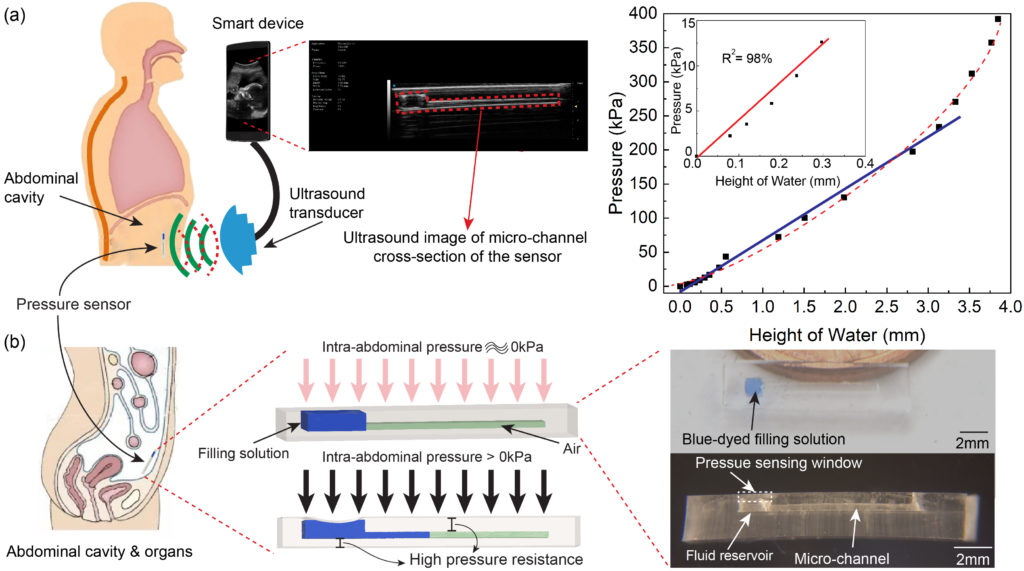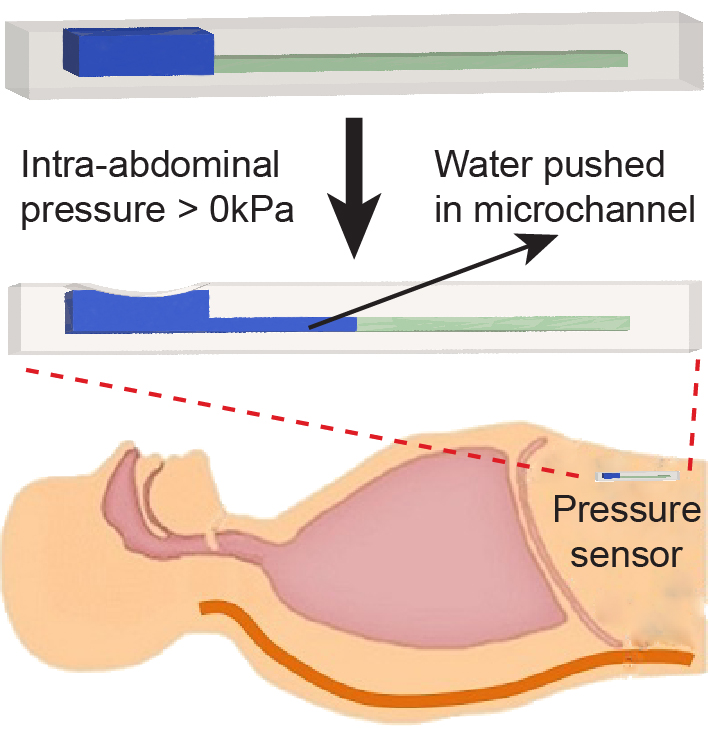
In this work, we demonstrate an implantable, low-cost, passive pressure sensor capable of measuring in situ IAP (intra-abdominal pressure) wirelessly via clinical-relevant ultrasound imaging. The sensor can be implanted via minimally invasive procedure or during surgeries performed for traumatic intra-abdominal organ injuries. Featuring a cost-effective and scalable massive fabrication, the transducer consists of a sub-mm scale reservoir filled with water and a hydrophobic microchannel, both made of PDMS. The working mechanism is to utilize ultrasound visualization to the gray-scale image of fluid displacement into an embedded microfluidic as a wireless and passive pressure monitoring scheme for potential use in the quantitative and continuous IAP monitoring at a tunable temporospatial resolution. Once sensing an external pressure, a pressure sensitive membrane upon the reservoir will be deflected and thus push the water from the reservoir into the channel; the in-channel fluid displacement is proportional to the applied pressure, which can be quantitatively analyzed by using a 40MHz ultrasound imaging system. The sensor presents a highly linear sensitivity of 42kPa/mm and a spatial resolution of 1.2kPa/30µm in the physiological range of abdominal compartment syndrome. The sensor is robust enough to work accurately (>95%) after >600 actuations cycles at pressure up to 55kPa and maintain 100% structural integrity without signs of leakage under static pressures for >48 hours of operation. In vitro biocompatibility assessment shows both biocompatibility of the components used in the sensor and its leak proof properties. Ex vivo experimental results present the practical functionality of the technology to effectively measure pressures under a 15 mm thick porcine skin. In summary, this novel wireless pressure sensing scheme offers a new paradigm for direct IAP sensing and a valuable insight that can be highly advantageous for wide range of emerging implantable pressure monitoring applications.

